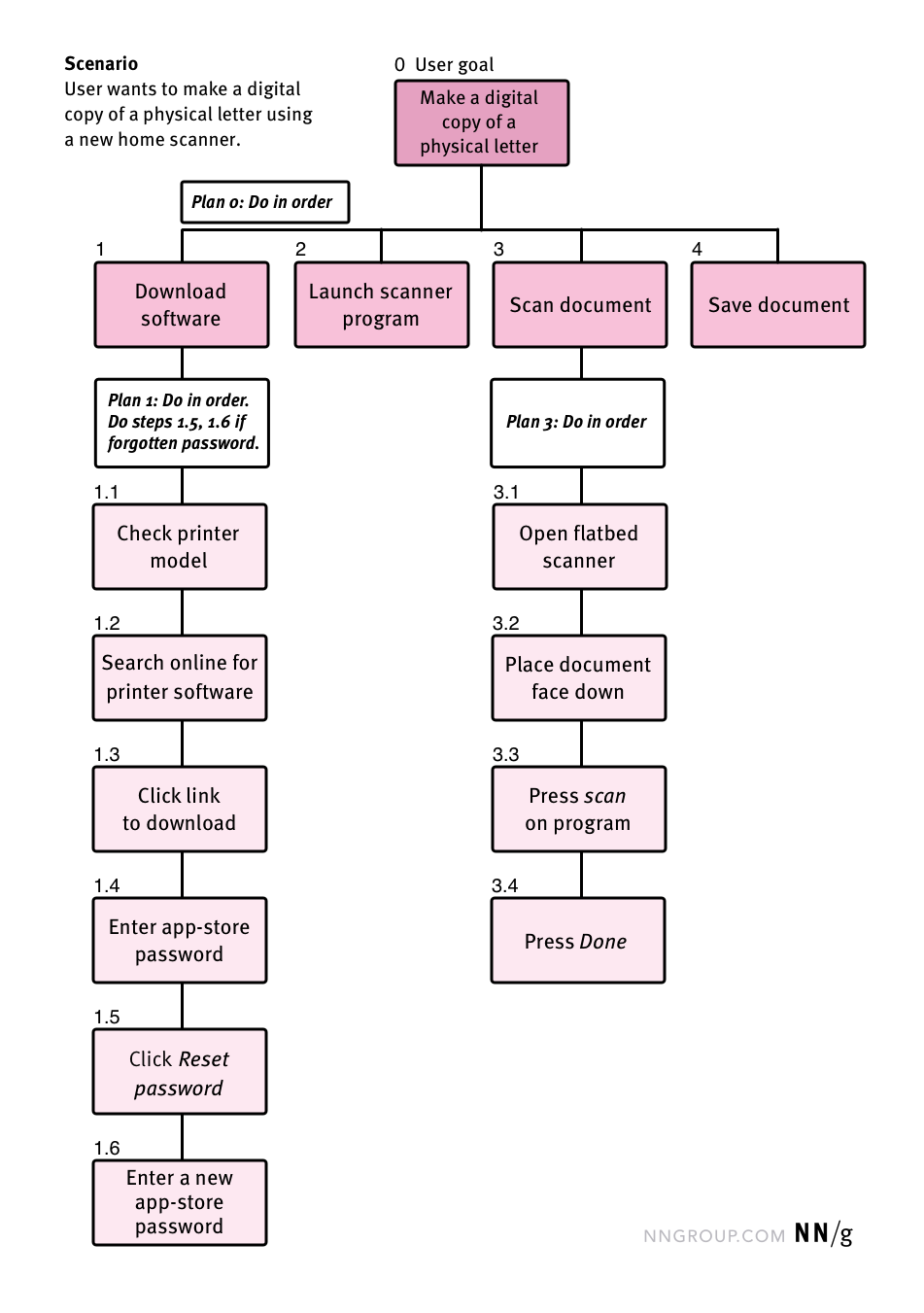Task Analysis
October 24, 2021
A task analysis is the process where designers identify the various tasks involving a product. According to the NN Group, the goal of task analysis is to make sure products are designed efficiently and support user goals. Designers use task analysis to list out tasks and identify different ways that users could potentially make errors throughout performing the task.
Task Analysis and Automation
In addition to task and potential error identification, task analysis can also be used to identify areas of potential automation.
For example, in the image to the right, there is the task of making a digital copy of a physical letter. We can use the task analysis to pick out which tasks can be replaced by automation and which tasks are better done by humans. In this task analysis, tasks such as "check printer model" and "search online for printer software" are tasks best done by humans. However, tasks such as "launch scanner program" and "scan document" could potentially be automated in the future.
For example, in the image to the right, there is the task of making a digital copy of a physical letter. We can use the task analysis to pick out which tasks can be replaced by automation and which tasks are better done by humans. In this task analysis, tasks such as "check printer model" and "search online for printer software" are tasks best done by humans. However, tasks such as "launch scanner program" and "scan document" could potentially be automated in the future.
Ethics in Task Analyses
It's crucial that designers are aware of their target audience when creating a task analysis, in addition to everyone that is excluded in the scope. Self driving cars are a great example. There is a project at MIT's Senseable City Lab that showed what a city intersection would look like when the roads are filled with completely self driving cars, as seen in the video below. That scene shows cars wizzing through the intersection without stopping. The ability for the cars to talk to each other means that they can slow down or speed up to avoid hitting each other.
If we thought about this using task analysis, we would define our scope as "A self driving car crossing a busy intersection." The task analysis is then performed from the perspective of the self driving car. Most importantly, pedestrians and bikers are left out. The resulting video that MIT released can be thought of as an analysis of the task from a car's perspective, however, because they left out the perspective of people and bikers, this task analysis is biased.
If we thought about this using task analysis, we would define our scope as "A self driving car crossing a busy intersection." The task analysis is then performed from the perspective of the self driving car. Most importantly, pedestrians and bikers are left out. The resulting video that MIT released can be thought of as an analysis of the task from a car's perspective, however, because they left out the perspective of people and bikers, this task analysis is biased.

Task analysis are crucial to understand how users complete their goals, and they're really helpful to see how automation can be introduced into a system (like the digital copy example). However, as designers, we need to be aware of the biases that we introduce into our work and task analyses are no exception.
Let me know if you have any other examples of biases in task analyses.
Let me know if you have any other examples of biases in task analyses.